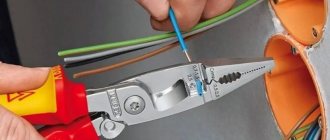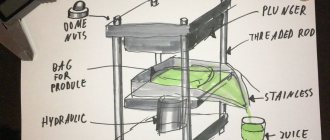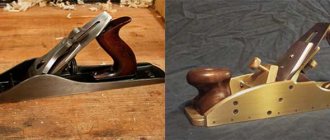What is a mounting belt
This is a tool storage bag. Anyone who is often forced to make something will definitely appreciate this invention. Thanks to him, it became safe to hang a shelf or take measurements at height. It takes quite a bit of time to pull out the necessary thing - a screwdriver, pliers, measuring tape, etc. - from the pockets of the belt. You don't have to keep going downhill to find the right tool.
As can be seen from the photo of the tool belt, the materials for it are:
- nylon fabric;
- leather;
- tarpaulin;
- any dense matter of rough texture.
The vest for carrying tools is equipped with a large number of pockets and pockets, as well as a system of tightening straps. It is this that allows you to adjust the construction tool belt individually to your figure.
Some products are equipped with special Velcro in the shoulder area - with their help, using the vest becomes much more convenient.
Homemade tool bag for belt
What tools should you have with you when performing work at height? It depends on what you are going to do. Basically this is a drill/screwdriver, a hammer, pliers, wire cutters, perhaps some open-end wrenches and a bunch of small things: bolts, nuts, screws, a set of bits, drills, terminals and much more. Therefore, a construction tool belt should be multifunctional, durable and comfortable. Let's start making it. Let's look at the whole process step by step.
STEP 1: select materials . To make a bag you need to choose a good and strong material. Leather is good for this. But we do everything on a budget! Therefore, you can take old jeans and use them for a good cause. Denim fabric is very dense and durable, it can easily withstand the load of all tools.
STEP 2: bag dimensions. We decide on the size of the tool bag for the belt. We calculate the number of pockets and loops needed, write down their sizes and begin to cut out the required pieces of fabric. Each tool should have its own pocket.
STEP 3: belt. You can use the belt from the jeans themselves as a belt for your bag. We cut off all the excess from it, and leave only the back of our former jeans. Pockets can also be removed. We make an additional latch to prevent the button or button that is already on the belt from being unfastened.
There are a lot of options on how to make a tool belt. We will look at one of the simplest ones. The pleasure will cost us almost free, with the exception of the purchase of 1 linear meter of fabric and an old belt. So let's get started!
Types of mounting bags
Mounting bags for tools can be of three types:
Shoulder. Such models are quite popular because they have a low cost. However, they soon lose their impeccable appearance. Such products are characterized by soft, easily deformable walls, which is why they are not always comfortable to use.
Belted. The tool mounting belt looks like a small tablet, equipped with pockets, loops and hooks.
In the form of a vest. This is the most ergonomic type of construction organizer. Most often they are made from a denim vest, equipped with a spacious storage system.
Professional models are sewn from nylon fabric. They are equipped with a huge number of fasteners and pockets. Such a large number of compartments can also be a disadvantage - when fully filled, they make the vest very heavy.
One of the most popular models of mounting bags is the Dewalt tool belt. This company has an excellent reputation for creating reliable instrument storage systems.
DIY screwdriver holster from a canister
For those people who urgently need a holster and pouch on time and don’t want to pay crazy money to hucksters.
By this point, the case must already be open, so we begin to remake the box that previously housed the battery. The sequence of actions will be as follows:
- 1. Separate the cord with leads from the plug (use a soldering iron).
- 4. Place the bare AC power supply towards the area of the former battery.
- 3. Connect the power cord to the power supply through a special hole in the case.
- 4. Solder the cord to the power supply.
The main task comes down to resoldering the wires from the contacts that connect to the battery to the contacts of the new power supply. Eventually, current will flow through them, allowing the motor to start when a button is pressed.
The output of the block is connected by terminals with strict observance of polarity. This entire structure should fit into your home with a former battery that is no longer needed. If something does not fit in size, then it is better to build a new socket into the handle of the tool.
An indispensable condition is to connect the power supply parallel to the supply terminals, install a special diode at the break in the positive wire. If this is not done, then the power during operation will go to the battery. The diode is again built into the circuit with the minus pointing towards the electric motor of the instrument.
You can easily make a power supply
for a screwdriver at home, you can purchase a ready-made version at the flea market. Craftsmen offer power supplies with already connected connectors that are inserted into the battery socket. Subsequently, the tool begins to work from the network.
If there is no outlet nearby, use a car battery. So you need to connect the screwdriver contacts to the battery contacts using special clamps. But this option is recommended to be used exclusively in the latter case, because the power of the car battery is not enough. Usually the output voltage does not exceed 11–12V, and to operate a screwdriver you need more than 18–19V.
Some people use computer power supplies to connect the instrument.
A common option among radio amateurs is AT-type elements used to power computers. The advantage is that such devices come with detailed specifications; you don’t have to calculate the current strength and other characteristics without the help of others. Inside it there is everything you need for measured work: diode assembly, transformers, power transistors. All that remains is to connect it correctly to the power contacts of the screwdriver.
A neater option is to connect the power tool directly to the mains using a plug on a flexible cable. But the wire cannot be connected directly from the contacts to the plug. To make a multifunctional and harmless network device, you will need a power supply or a transformer with a rectifier. In this case, no matter what model is suitable, as long as its properties correspond to the required characteristics. This assembly method is especially suitable for experienced craftsmen, since it is necessary to accurately calculate the number of turns and the diameter of the wire.
If you want to maintain convenience and mobility, then increasing the battery capacity is suitable. You need to find a battery for any equipment, for example, a laptop. They are usually quite massive and are able to maintain functionality for some time.
We perform the following actions:
- 1. Disassemble the device case and remove the battery.
- 2. We connect the wiring of the new battery with the old one, strictly observing the polarity.
- 3. We fasten the wires using insulating tape or solder them with a soldering iron.
- 4. Turn on the power tool and check its functionality.
The cable for charging the device must be routed separately, so the plug must be attached. If everything is done correctly, then the screwdriver will be able to operate from a battery, and of course charge it like an ordinary laptop by plugging it into the mains.
Regardless of the method you choose, do not forget that the properties of the device have changed. During operation from the network, the greatest torque is not achieved immediately, but after a certain period. The increased power leads to rapid heating, so you should give the little one a rest every 15–20 minutes. When operating a converted tool, you should pay attention to safety precautions, therefore high-quality insulation and grounding are an indispensable condition.
Due to the compromised density of the housing, the intensity of contamination increases, so you should often clean it of dust. Moisture can also get inside, especially when working outdoors. Following the usual rules will protect against nasty incidents and significantly extend the life of the electronic tool.
Source
We make a tool organizer with our own hands
How to make a tool belt? This question worries many masters. Let's try to answer it.
You will need an old leather belt, preferably a military one. We will attach all kinds of fastenings and pockets to it. Straps from an old backpack or bag can be used as compartments for storing pliers and screwdrivers. To be able to attach a bunch of wrenches to the belt, it is appropriate to attach several carabiners to the product.
It would also be a good idea to equip a couple of pockets - you can put all sorts of small things in them, such as nails, screws, fasteners, etc. That's all - your DIY tool belt is ready!
Homemade tool bag for belt
What tools should you have with you when performing work at height? It depends on what you are going to do. Basically this is a drill/screwdriver, a hammer, pliers, wire cutters, perhaps some open-end wrenches and a bunch of small things: bolts, nuts, screws, a set of bits, drills, terminals and much more. Therefore, a construction tool belt should be multifunctional, durable and comfortable. Let's start making it. Let's look at the whole process step by step.
STEP 1: select materials . To make a bag you need to choose a good and strong material. Leather is good for this. But we do everything on a budget! Therefore, you can take old jeans and use them for a good cause. Denim fabric is very dense and durable, it can easily withstand the load of all tools.
STEP 2: bag dimensions. We decide on the size of the tool bag for the belt. We calculate the number of pockets and loops needed, write down their sizes and begin to cut out the required pieces of fabric. Each tool should have its own pocket.
STEP 3: belt. You can use the belt from the jeans themselves as a belt for your bag. We cut off all the excess from it, and leave only the back of our former jeans. Pockets can also be removed. We make an additional latch to prevent the button or button that is already on the belt from being unfastened.
There are a lot of options on how to make a tool belt. We will look at one of the simplest ones. The pleasure will cost us almost free, with the exception of the purchase of 1 linear meter of fabric and an old belt. So let's get started!











